Description
Green Nutmeg Cantaloupe (A.K.A. Nutmeg Melon)
25 Seeds per pack
Days to Maturity: 80–85 days
Sun Requirements: Full Sun
Botanical Name: (Cucumis melo)
One of the oldest named melons in American gardens, Green Nutmeg dates back to the early 1800s—mentioned by Bernard McMahon in 1806 and grown at Monticello by Thomas Jefferson in 1811. This heirloom muskmelon, native to Europe and introduced to the U.S. before 1830, belongs to a class known as “nutmeg melons” for their heavily netted skin, oblong shape, rich aroma, and subtly spicy-sweet flavor.
Reliable and productive, Green Nutmeg produces medium-sized fruits weighing 2–3 pounds, with vivid green flesh that is sweet, juicy, and has a strong, sweet aroma that fills the air when it’s fully ripe. Its vines are sprawling but manageable, reaching 12–15″ tall and spreading up to 6 feet wide. Plants grow well in hills spaced 4 feet apart, and thrive in full sun with rich, compost-amended soil. Suitable for garden beds, raised beds, or even large containers.
This variety remains a favorite for its adaptability to short seasons—ripening well even when nights grow cool and the growing window is shorter. Whether grown on the ground or trained to climb a trellis, it rewards gardeners with a rich flavor, making it a great addition to garden!
Planting Instructions for Green Nutmeg Cantaloupe Seeds
When to Plant:
Direct sow Green Nutmeg Melon seeds outdoors 1 to 2 weeks after your last frost date, once the soil consistently reaches 70°F (21°C) or warmer. For shorter seasons or cooler regions, start seeds indoors 4 to 6 weeks before last frost, using peat pots or soil blocks to avoid root disturbance. Transplant outdoors after hardening off and when both soil and air temperatures are consistently warm and the danger of frost is past.
Where to Plant:
Choose a site in full sun that receives at least 8 hours of direct sunlight daily. Green Nutmeg Melons thrive in fertile, well-drained soil with a pH of 6.0–7.0. Raised beds or south-facing slopes are ideal. Incorporate 2–3 inches of compost before planting. Avoid planting in areas that recently grew other melons, cucumbers, squash, or pumpkins.
How to Sow:
Sow seeds ½” to 1″ deep. If planting in rows, space seeds or transplants 18–36″ apart in rows 5–6′ apart. For hills, sow 3–4 seeds per hill and thin to the strongest 1–2 plants. For trellising, space plants 12–18″ apart along a sturdy support.
Watering:
Keep soil consistently moist through germination. Once vines are established, provide 1–2 inches of water per week. Water deeply and less frequently to encourage deep rooting. Reduce watering slightly once fruit begins to ripen to improve sweetness and avoid splitting. Avoid overhead watering to reduce the risk of mildew.
Fertilization:
Mix compost into the planting site before sowing. Additional fertilizer is typically not needed unless soil is poor. If desired, side-dress with compost tea, fish emulsion, or a balanced organic fertilizer once vines begin to spread and again when the first small fruits begin to form.
Mulching:
Once your seedlings are growing well, add mulch around the plants. Use black plastic if your goal is to warm the soil. Warmer soil helps seeds sprout faster and encourages early root and vine growth, which is especially helpful in cooler climates or early in the season. If you’re mainly trying to hold in moisture and stop weeds, straw or shredded leaves are good options, but they won’t help the soil warm up as much. Mulching also keeps the fruits clean by lifting them off the dirt and helps stop mud from splashing onto them when it rains.
Training & Pruning:
Vines can be allowed to sprawl or trained vertically. For vertical growth, support fruit with cloth slings. If desired, lightly prune some of the small side branches that grow off the main vine to help air move through the plant and let it focus energy on growing better-quality fruits. Avoid over-pruning, which can reduce flower production and sugar development.
Pollination:
Green Nutmeg Melons produce both male and female flowers. Bees and other pollinators are essential for fruit set. Encourage pollination by planting pollinator-friendly flowers and herbs nearby. Good choices include borage, dill, sunflowers, marigolds, and oregano allowed to flower. These help attract bees and other insects that will visit your Green Nutmeg Melon blooms. In low-pollinator areas, hand pollinate by transferring pollen from male to female blooms using a small paintbrush.
Common Pests & Diseases:
- Pests: Watch for aphids, cucumber beetles (vector for bacterial wilt), squash bugs, and vine borers. Use row covers until flowering, hand-pick pests, or apply insecticidal soap in the early morning or evening.
- Diseases: Powdery mildew, downy mildew, and leaf blights can occur. Improve air circulation, avoid overhead watering, and space plants adequately. Treat outbreaks with organic fungicides or DIY sprays (e.g., baking soda solution).
Harvesting:
Green Nutmeg Melons are ready to harvest when the skin develops a strong netting pattern and the fruit gives off a sweet, spicy aroma. The blossom end should give slightly under gentle pressure, and the fruit may begin to slip from the vine when fully ripe. Check frequently for ripeness during peak season.
Storage:
Store ripe, uncut Green Nutmeg Melons at 45–50°F for up to 1 week. Once cut, refrigerate and use within 3 days. Wash melons thoroughly before cutting to avoid transferring bacteria from rind to flesh.
Seed Saving:
Saving Green Nutmeg Melon seeds is an enjoyable and economical way to preserve this classic heirloom variety. Green Nutmeg Melons are insect-pollinated and cross readily with other melon types, so avoid growing multiple melon varieties within ½ mile of one another.
Let the melons ripen fully on the vine. Once picked, cut them open the long way and scoop out the seeds into a jar. Add room temperature (not hot) water and let the mixture sit for 2 to 4 days, stirring it once each day to help the seeds separate. Good seeds will sink, while pulp and non-viable seeds float. Pour off the debris, rinse the good seeds thoroughly, and spread them out on a paper towel or mesh screen to dry for several days in a well-ventilated area.
Once your seeds are fully dry, you can store them in a labeled container. For longer storage, you can keep the container right in the freezer. Freezing helps protect seeds from moisture, pests, and temperature swings, especially over many months. For a quick and easy option, use our seed-saving envelopes. They’re simple to use, pre-labeled, and include spaces to write the variety, date, and any notes you want to remember. They help keep your seeds neat, labeled, and easy to find when you’re ready to plant next season. When stored properly, Green Nutmeg Melon seeds can last 3–5 years.
FAQ:
What is the historical or notable background of Green Nutmeg Cantaloupe?
Green Nutmeg is one of America’s oldest named melon varieties, mentioned by Bernard McMahon in 1806 and grown at Monticello by Thomas Jefferson in 1811. It was introduced from Europe before 1830 and is recognized for its distinctive netted rind and aromatic, spicy-sweet flavor.
How would you describe the flavor of Green Nutmeg Cantaloupe?
Green Nutmeg offers a uniquely spicy-sweet taste with juicy, vivid green flesh and a aroma that fills the air when the melon is fully ripe.
What does Green Nutmeg Cantaloupe look like, and what are its growing habits?
This variety produces 2–3 lb oblong fruits with heavily netted skin. The vines are sprawling yet manageable, growing 12–15" tall and spreading up to 6 feet, suitable for gardens, raised beds, or large containers.
How and when do I harvest Green Nutmeg Cantaloupe?
Harvest when the skin develops pronounced netting and emits a sweet, spicy scent. The blossom end should yield slightly to pressure, and ripe fruits may slip off the vine. Check daily during peak ripening.
When is the best time to plant Green Nutmeg Cantaloupe?
Plant outdoors 1–2 weeks after your last frost, when soil stays above 70°F. In cooler climates, start seeds indoors 4–6 weeks prior and transplant once the weather stabilizes.
What are common culinary uses for Green Nutmeg Cantaloupe?
Enjoy it fresh in fruit salads, blended into smoothies, or paired with savory dishes like prosciutto. Its sweet and spicy notes also shine in chilled soups or melon sorbet.
What’s the best way to store Green Nutmeg Cantaloupe after harvest?
Store whole, ripe melons at 45–50°F for up to a week. Once cut, refrigerate and consume within 3 days. Always wash the rind thoroughly before slicing to avoid contamination.
What nutrients does Green Nutmeg Cantaloupe provide?
This melon is rich in vitamins A and C, beneficial for immune support and skin health. It also contains hydration-boosting electrolytes and antioxidants from its green-hued flesh.
Does Green Nutmeg Cantaloupe have any notable disease or pest resistance?
Though not disease-resistant by nature, it performs well in cool climates with proper care. Airflow, mulching, and proper crop rotation help reduce mildew and improve overall plant health.
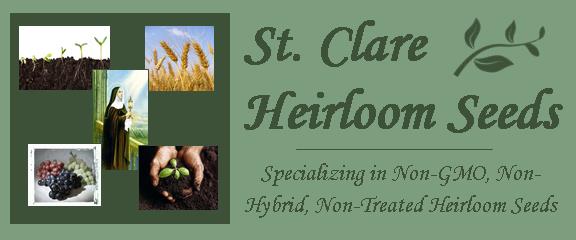










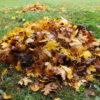
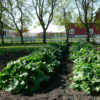

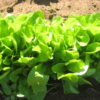
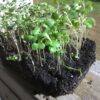

Coit Frandsen (verified owner) –
Wonderful